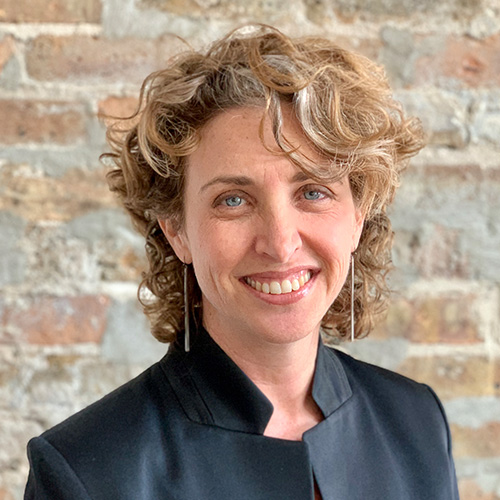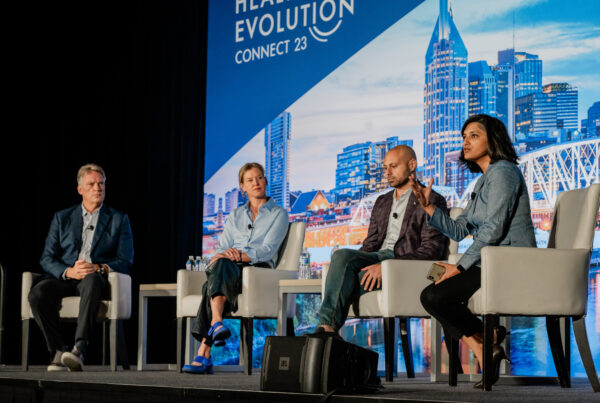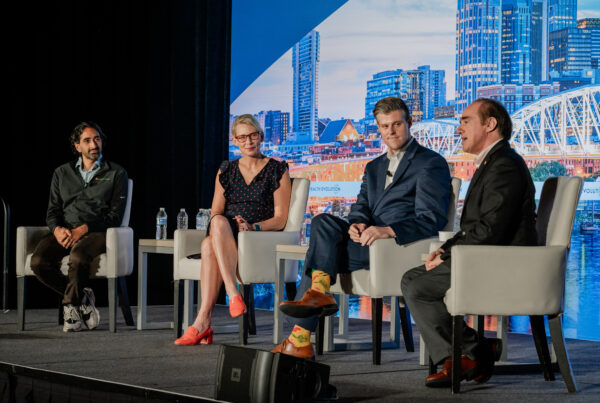An aging population and a confluence of other factors has meant the number of Americans acting as unpaid caregivers has gone up in recent years. According to a report from AARP, more than one-in-five Americans was a caregiver in 2020, going from 18 percent in 2015 to 21 percent in 2020. The number will only continue to rise thanks to aging Baby Boomers.
The confluence of unpaid caregivers, according to AARP, impacts people across all generations, racial/ethnic groups, income or educational levels, family types, gender identities, and sexual orientation. Yet, the data suggests that the health system has a long way to go in providing proper support for these unpaid caregivers. One-in-four caregivers say it’s difficult to coordinate their recipient’s care across various providers and the same number say it’s difficult to get affordable services for their recipient.
Challenges with caregiving for their elderly father led brother-sister combo, Hillary Ebach and John Banta, to start the company, Carallel, which offers a platform and a support team to help caregivers navigate the health system on behalf of their patient. In March of this year, Shara Cohen, a veteran health IT executive who worked at Wolters Kluwer and Emmi Solutions, was named CEO of the company. Carallel works with health plans, particularly since Medicare has made it easier for them to serve the needs of informal caregivers with an allowable supplemental benefit for caregiver support, Cohen says.
“As our population is aging, we’re increasingly reliant on friends and families for support in small ways—grocery shopping, picking up medications, things like that—and in big, complicated ways—advanced care planning, site of care transitions, financial planning. What health plans are realizing is they are reliant on a hidden workforce of caregivers and the ability of those caregivers to operate with confidence and act from a position that isn’t vulnerable,” Cohen says. “It contributes to the health outcomes of those members.”
Cohen spoke with Health Evolution on the increased focus by health plans and others into caregivers, the challenge caregivers from underserved, vulnerable populations typically face, and more.
Why are caregivers becoming more of a focal point?
As we push into value-based care and there is a movement of care back into the home, we are essentially increasing our reliance on caregivers. They will shoulder the burdens of supporting sick, chronically ill, elderly patients. There is essentially an unpaid workforce health plans are dependent on. It’s a hidden workforce. The challenge is that most health plans don’t know who those caregivers are, they don’t have the bandwidth and, frankly, the expertise, to create those connections with caregivers. Those caregivers are the best remote patient monitor you can have. They are the eyes, ears, and early warning system for health care organizations on their patients/members. That has to make them a priority.
What challenges do caregivers face, especially people of color or LGBTQ+ caregivers?
The challenges that caregivers face universally is they are thrust into situations that are unfamiliar, complicated, and emotional. Caregivers are often called upon to help support in the basic day-to-day tasks that a loved one has in managing their health care and their health care journey. Figuring out insurance, financial planning, legal planning, and housing. All of these are complex domains that are unfamiliar at best, and overwhelming and byzantine. Any caregiver has the challenge of juggling those tasks that are unfamiliar and stressful with the rest of their lives.
See also: Why COVID-19’s toll on unpaid caregivers’ mental health is ‘terrible and heartening’
Of course, aging processes and health conditions don’t discriminate based on color, race, and identity, but the challenges caregivers from underserved or marginalized communities face is profound. The same challenges we think of in terms of social determinants of health for patients also impact caregivers. What we see is that the response of communities to supporting patients and loved ones, they have different impacts [depending on who they are]. LGBTQ+ people are more likely to be caregivers than straight people. Hispanic people are more likely to take on caregiving responsibilities at younger ages and spend more time caregiving, which impacts employability. Caregiving in general is highly disruptive to employment status, but more so for Black people. They are more likely to retire or leave a job early because of this outside of work responsibility. We need to be sensitive and nimble in serving the needs of caregivers based on their particular circumstance. The flip side is caregivers are also the primary navigator for members and patients to overcome these kinds of obstacles. As we see increased attention and investment by the health care community into social determinants of health, aligning and helping caregivers and treating them as allies in helping members overcome social determinants is a really important strategy.
Homepage image credit: Pexels.com/Mattias Zomer

It has been proven over and over again, caregivers have a significant impact on outcomes. Lower hospitalizations, lower length of stay, lower use of the ED when there is a presence of a caregiver. This isn’t a soft topic for health care leaders. There’s significant ROI to be driven.
Shara Cohen, Carallel
Whose problem is this to solve?
It’s obviously a complicated question. We have historically relied on state government and non-profit organizations to support caregivers. The move that we’ve seen from CMS and we’re hearing from the federal government is an important effort to bring caregiver support to the forefront. I think that health care performance is dependent on the capability of caregivers. When health plans set strategies or providers work to reduce readmission rates and length of stay at the same time, we’re shifting responsibility and burden to caregivers. When we talk about value-based care performance, the triple aim, there is a large dependence on caregivers to “perform.” I think health care organizations benefiting from caregivers are essentially benefitting from an unpaid labor force. They need to be part of the solution. It’s not enough to refer to support groups in churches and faith communities. It’s not enough to turn to government agencies that are distant from those health plans. As part of a strategy to improve outcomes, quality metrics and other value-based care metrics, we have to serve caregivers as contributors to that endeavor.
What can health care organizations do to support and connect with these caregivers?
They can be proactive. Caregiving is mostly done behind the scenes and caregivers don’t often self-identify. Health care organizations need to be proactive in reaching out and creating value and a connection to people in caregiving roles. One step is identifying who those caregivers are and not limiting it to the power of attorney. Who are those partners they can create connection with? That’s what Carallel does.
After being proactive, they should be in service to those caregivers. As a health care industry, we are quick to assign responsibilities and tasks to people. Too often that is the starting point for “caregiver engagement” by health plans and providers. In doing that, they are creating more burden for caregivers. You have to address the caregiver’s needs, the stress they are dealing with, and address their concerns. By doing that, you can earn trust, form a relationship, and understand the underlying actions that are creating that burden and start to relieve that. You can give them strategies so they can be more confident in their strategies when dealing with their loved ones. They can be more capable of completing the tasks that are being foisted upon them. They can be more effective and resilient in their caregiving journey.
What advice do you have for those organizations investing in caregiving services for the first time?
The first thing to know is that you have to be proactive, and you have to recognize that caregiving looks different in diverse communities. You have to be proactive and not assume you will hear from that caregiver. You need to provide value proactively. You have to reach out with information that is relevant, clear and in service to that caregiver. The other thing I’d say though is in these different communities, the relationship with the health care system varies widely. In LGTBQ+ communities, where caregiving is not often provided by a family member, but a caregiver of choice, we need to be sensitive and respectful of that relationship. We shouldn’t dismiss it because it’s not a familial, biological relationship. In communities of color, where there is a lack of trust and a feeling of not being seen, it is not enough to provide passive resources to that community. They are unlikely to look to a health plan or provider who may have not served in the past to provide that service. Meeting people on their terms with the intention to help them in their journey as they support a loved one is important. That intention is really important.
It has been proven over and over again, caregivers have a significant impact on outcomes. Lower hospitalizations, lower length of stay, lower use of the ED when there is a presence of a caregiver. This isn’t a soft topic for health care leaders. There’s significant ROI to be driven. It’s a lot more complicated than putting up a flyer on a website.










